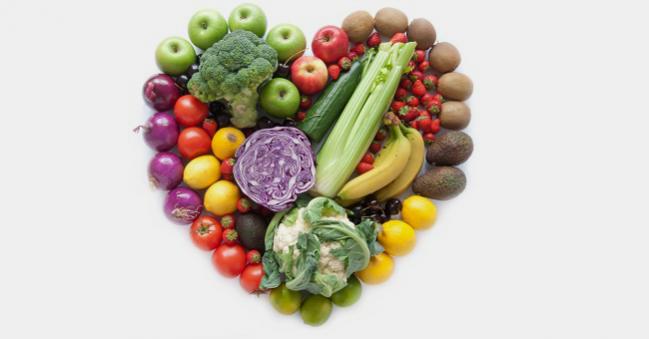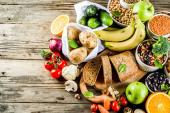Daily Fruit and Vegetable Intake Linked to Lower Mortality
While two fruit and three vegetable servings per day was found to be optimal, potato-lovers might be disappointed.

Three servings per day of vegetables and two servings of fruit may be key to living longer, according to a large study of community-based data and a meta-analysis.
The findings strengthen decades-old public health recommendations to consume five daily servings of fruits and vegetables for optimal health by linking that recommendation to cause-specific mortality data. Compared with people who ate only two servings of fruits and vegetables per day, the analysis found that those who consumed five had lower risks of death from all causes (HR 0.87; 95% CI 0.85-0.90), CV disease (HR 0.88; 95% CI 0.83-0.94), cancer (HR 0.90; 95% CI 0.86-0.95), and respiratory disease (HR 0.65; 95% CI 0.59-0.72).
However, lead author Dong D. Wang, MD, ScD (Harvard T. H. Chan School of Public Health, Boston, MA), said the study also offers a novel caveat.
“A second take-home message from our study is that all the foods that people may consider to be fruits and vegetables may not offer the same kind of health benefits,” he told TCTMD. For example, the analysis found that potatoes and other starchy vegetables like corn, yams, peas, and lima beans were not associated with lower mortality. Neither were orange and apple juice or any other fruit juices.
“On the other hand, if you look at the green leafy vegetables such as spinach or lettuce, and some orange-colored fruits and vegetables such as citrus and carrots, they were associated with a pretty large risk reduction in terms of all-cause and cause-specific mortality,” Wang added.
The message that all fruits and vegetables may not count as healthy options could be especially pertinent to federal nutrition assistance programs and the current Dietary Guidelines for Americans, which treat them all the same, Wang and colleagues say.
The study was published online March 1, 2021, ahead of print in Circulation.
Extensive Data Analysis
The findings were derived from the Nurses’ Health Study of 66,719 women and the Health Professionals Follow-up Study of 42,016 men. Both studies had follow-up of approximately 30 years and included comprehensive dietary assessments. Wang and colleagues also conducted a dose-response meta-analysis of 26 studies that involved nearly 2 million adults.
Compared with individuals who consumed lower daily levels of fruits and vegetables, those who ate five or more servings tended to be older and were more likely to take multivitamins. They also had higher calorie intakes as well as better dietary quality and physical activity levels. Women were more likely to have a high fruit and vegetable intake if they were using menopausal hormones and had a family history of MI, diabetes, or cancer.
Foods associated with lower mortality, included nonstarchy vegetables like string beans, celery, brussels sprouts, and broccoli; green leafy vegetables like raw or cooked spinach and various lettuces; citrus fruit; other vitamin C-rich fruit like cantaloupe and strawberries; and beta carotene-rich fruit and vegetables like raw or cooked carrots and winter squash.
The lower mortality associated with eating three vegetables and two fruits per day was consistent across various subgroups defined by age, smoking, body mass index, hypertension, and hypercholesterolemia (P for interaction > 0.05). Additionally, eating more than that did not lead to a further decrease in mortality. Some prior research has suggested that additional reductions in mortality could be attained by eating up to 10 servings per day.
Wang said the robustness of the current study, taken together with other large cohort studies, strengthens the science behind the five-a-day rule. In the paper, he and colleagues say the idea of a threshold effect makes sense because “bioactive components of fruit and vegetables, such as carotenoids, vitamin C, and polyphenols, have limits in absorption, transport, metabolism, or storage, and their effects may be mediated by enzyme activities that can be saturated.”
Given that contemporary data suggest that most adults in the United States eat only about 1.5 servings of fruit and vegetables a day, Wang said the added death risk may be useful in encouraging people to increase their intake of healthy produce, although it’s unclear why the combination of two fruits and three vegetables strikes the perfect balance.
“I think it’s convincing,” he said. “[These are] strong and consistent findings and we had the power in this analysis to look at specific fruits and vegetables in these cohorts, so it adds something important that we don’t see in other research.”
L.A. McKeown is a Senior Medical Journalist for TCTMD, the Section Editor of CV Team Forum, and Senior Medical…
Read Full BioSources
Wang DD, Li Y, Bhupathiraju SN, et al. Fruit and vegetable intake and mortality: results from 2 prospective cohort studies of US men and women and a meta-analysis of 26 cohort studies. Circulation. 2021;Epub ahead of print.
Disclosures
- Wang reports no relevant conflicts of interest.





Comments